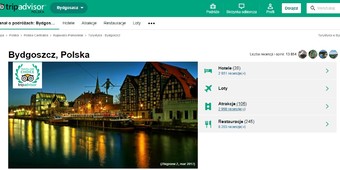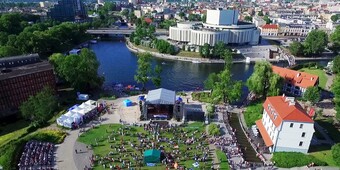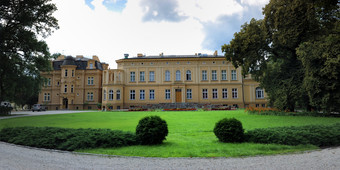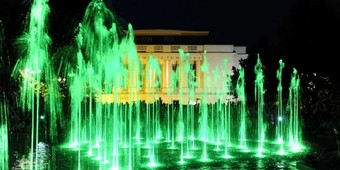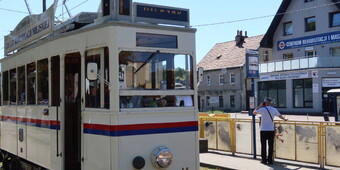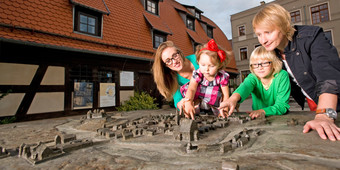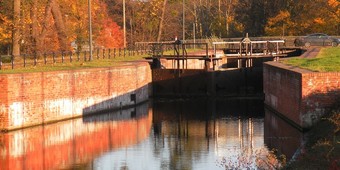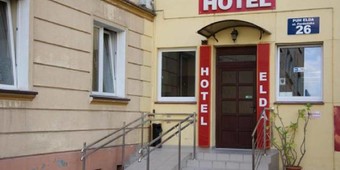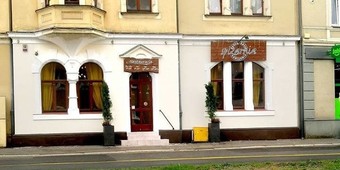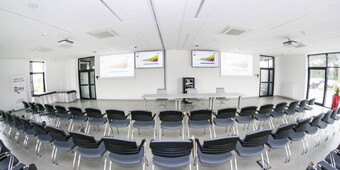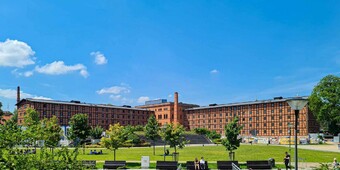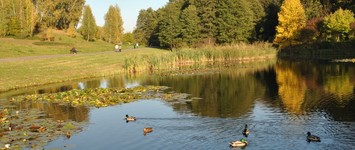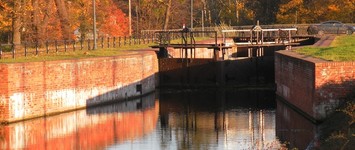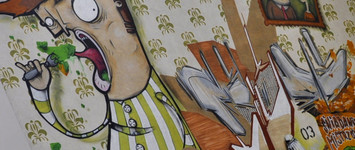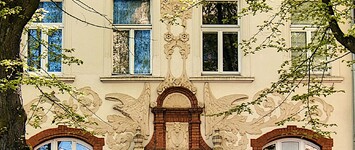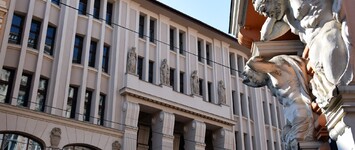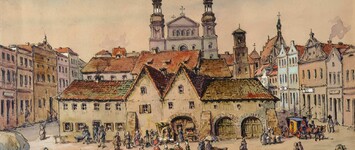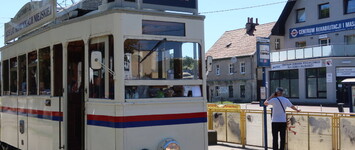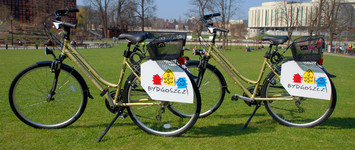The second half of the 19th century and the beginning of the 20th century was a time when Bydgoszcz experienced rapid growth. It was then that the city became an important centre of West Prussia. Bydgoszcz was strongly influenced by Berlin at that time. The city on the Brda River was even called little Berlin ("Klein Berlin"). That is why, not surprisingly, new trends in art came to Bydgoszcz mostly from the capital of Prussia and the German Empire. The Art Nouveau style was among those trends.
The style called Art Nouveau flourished at the turn of the 20th century, especially in the years 1890-1910. The birth of this new style in art was the result of artists searching for something completely new, original and unique. Architects, painters and designers wanted to distance themselves from the repetitive forms of historicism, that is the tradition of drawing on the culture of ancient Greece and Rome. This way, an extraordinary style was created. The lack of symmetry in the composition of the facade, the richness of decoration with motifs taken from the world of fauna and flora, and the flowing and curved lines are among its most characteristic features. Art Nouveau has many varieties and it is known under different names: Art Nouveau in France and Britain, Jugendstil in Germany, Stile Floreale in Italy or Modernismo in Spain. However, it attracts a lot of attention and genuine interest everywhere.
The architecture of the 19th century Bydgoszcz is dominated by historicism, the imitation of what was created in the previous periods. However, it has often the form of eclecticism which combines elements characteristic of different styles from the past. One of those styles was Art Nouveau, an extraordinary style which came to the city on the Brda from Germany. That is why, in Bydgoszcz the style has primarily the features typical of the Berlin Art Nouveau. There is a number of truly Art Nouveau buildings in Bydgoszcz but most of them are classicist in character but covered with interesting Art Nouveau decoration. The city lacks truly original asymmetric facades so characteristic of many buildings in Paris, Brussels or Vienna. However, it should be remembered that it is hardly possible to find a large number of fully Art Nouveau buildings in one city. In Bydgoszcz, Art Nouveau decorations have been preserved in many places although many interesting structures have lost their Art Nouveau costume over the years, especially in communist Poland. Nevertheless, our city has a lot to offer to all the people fascinated by Art Nouveau. We kindly invite you for a walk along the streets of Bydgoszcz lined up with buildings designed in this style.
Note: Some buildings are/may be undergoing renovation.
1. The Municipal Centre for Culture, 12-14 Marcinkowskiego Street.
The building in its original form was designed by Fritz Weidner, one of the leading Bydgoszcz architects. The design from 1901 was about the adaptation and extension of the existing facilities for the needs of a restaurant run by Carl Bartz. Weidner, who was enthusiastic about the Art Nouveau style, designed the best Art Nouveau structure in the city located at what was then Fischer Strasse. The building’s characteristic features included the lack of symmetry, windows of unusual and diversified shapes freely arranged on the façade, and rather limited but original decorations. Floral ornaments decorated mainly the central part of the building. Today, as in the past, what attracts attention is the fanciful arch that surrounds the portal. Above it, the facade is topped with a wavy, concave-convex line. The building, most likely inspired by the Secession Pavilion in Vienna by Joseph Maria Olbrich, was unfortunately rebuilt in the post-war years. Luckily, during the last extensive renovation from the years 2010-2012, when this facility was being adapted for cultural purposes, much of its original Art Nouveau beauty was restored.
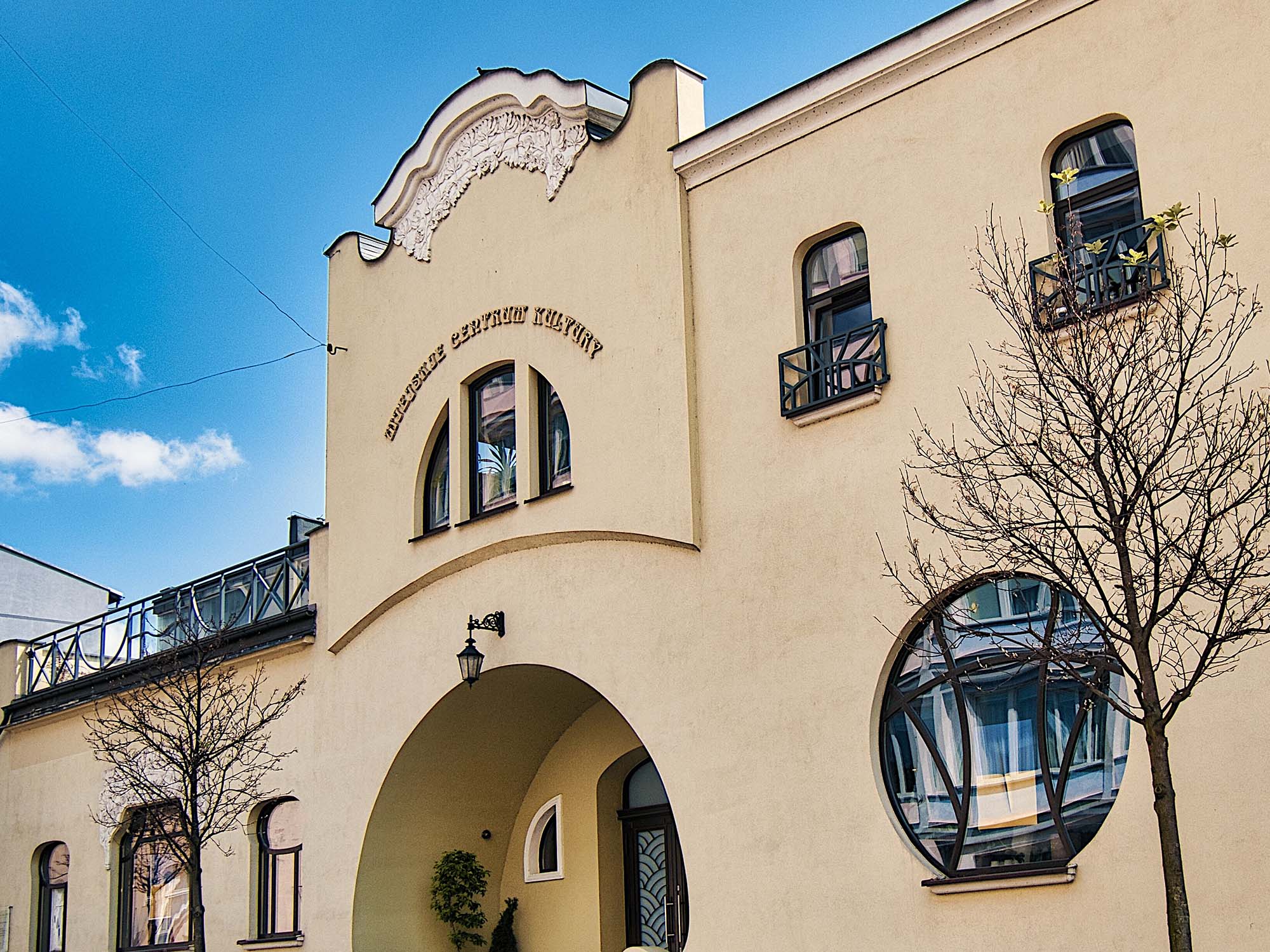
2. Tenement house at 3 Freedom Square.
The building, erected in 1905, was designed by the Bydgoszcz architect Fritz Weidner. Undoubtedly, it is one of the most interesting examples of Art Nouveau in the city. Art Nouveau decorations, limited to the lower floors, include women's faces, chestnut leaves, a beehive and an owl. The facade is asymmetrical. The bay window, gables, turret, loggia and balconies seem to be arranged rather randomly. The curved, flowing line, so characteristic of Art Nouveau, was skilfully woven into the balustrades of the balconies. Inside, the tiles covering the walls in the entrance and the plant form of the staircase balustrade post deserve attention.

3. Villa at 4 Paderewskiego Street.
The building was designed in 1904 by the Bydgoszcz architect Rudolf Kern for Max Eichenberg, the owner of a brickyard. It is one of the best examples of Art Nouveau in Bydgoszcz. The architect, who must have enjoyed the Art Nouveau style, created an asymmetrical building, rich in architectural elements. The window openings of various shapes, bay windows, loggias and gables seem to be randomly placed on the facade. It is decorated with fancy details in the form of flowers, butterflies, fish, frogs or stylized faces. The sinuous, flowing line, characteristic of Art Nouveau, is woven into the balustrade of the balcony, but it can be found in other places, too. The facade also features geometric shapes typical of the Berlin Art Nouveau. It is worth paying attention to the entrance door, especially the metal elements, including the shape of the handle. Unfortunately, the Art Nouveau ornaments which once decorated the top-most parts of the facade from the side of the street have not been preserved.
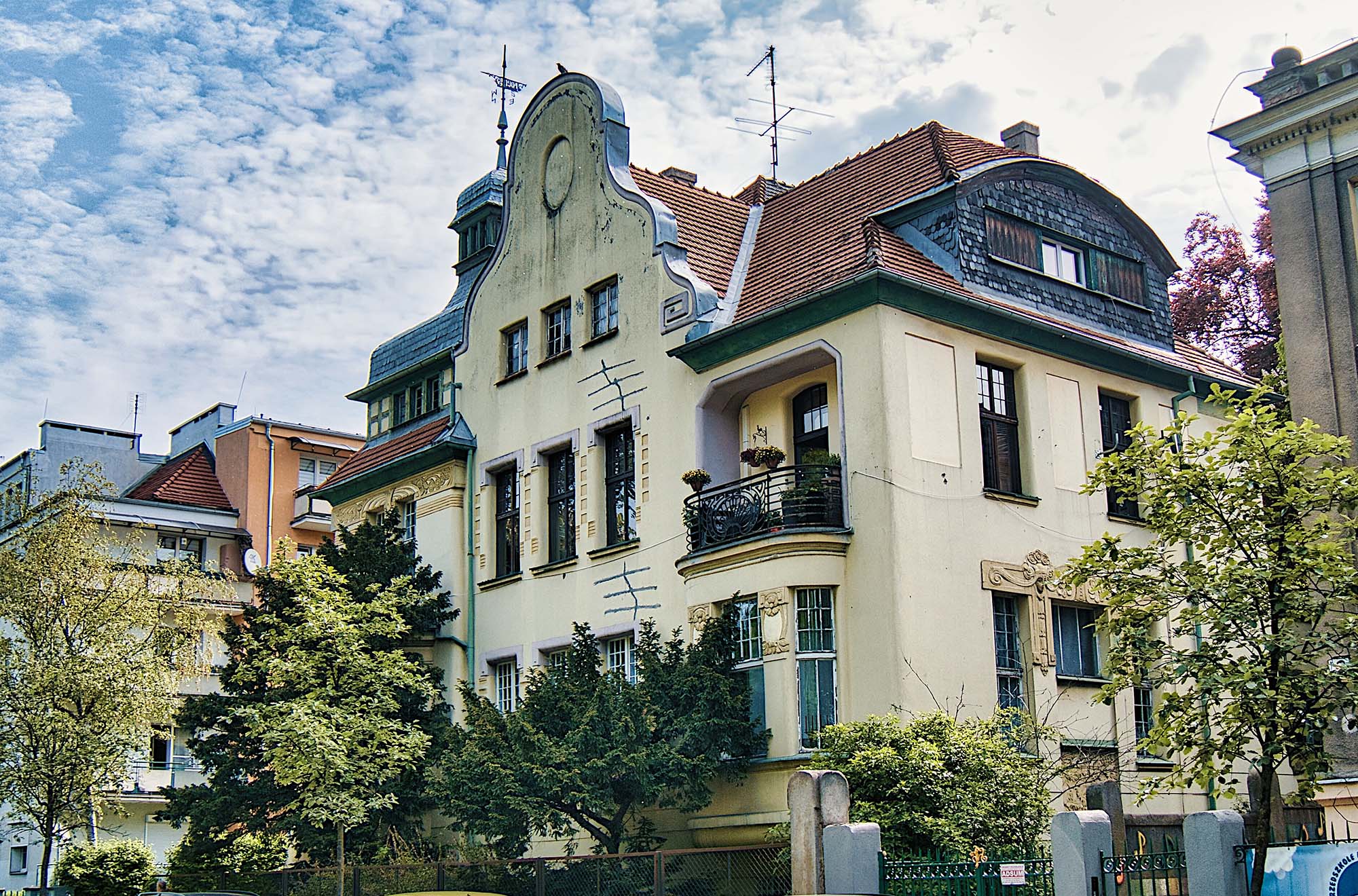
4. Tenement house at 1 Mickiewicza Avenue, on the corner of Gdańska Street (building currently undergoing renovation).
The building, erected in 1903-1904, was designed by the Bydgoszcz architect Rudolf Kern as his own house. He also ran his architectural office in this place. It is one of the most interesting and original tenement houses in Bydgoszcz. The Art Nouveau facade attracts attention with its goblet-shaped cupola, impressive gables (unfortunately, the top-most parts are now without the rich decorations they once had) and asymmetric arrangement of bay windows and loggias. The entrance to the house is adorned with a fancifully designed portal, decorated with a mysterious face hidden in the plants. The entrance door itself and the preserved metal Art Nouveau fittings in the shape of lizards or snakes are equally interesting. In the entrance to the staircase one can find Art Nouveau tiles on the walls and floor as well as beautiful wooden balustrades. There are also fragments of the original Art Nouveau stained glass windows.

5. Tenement house at 9 Mickiewicza Avenue.
The building was erected in 1905-1906 for the seat of the Bydgoszcz Music Conservatory, a music school whose first director was professor Arnold Schattschneider. The impressive edifice was designed by the Bydgoszcz architect Rudolf Kern, the author of a number of big-city tenement houses and villas in this part of the city. The carefully renovated facade of the building attracts attention with its Art Nouveau decoration. On the asymmetrically designed facade, among many interesting ornaments, one can find flowers and mysterious faces. What makes the tenement house unique is the portal designed as a kind of openwork pattern, formed by the flowing, curved line typical of the Art Nouveau style. The building lost most of its original ornaments after World War II. Fortunately, they were restored during a major renovation carried out in the years 2002-2004.

6. Tenement house 68 Gdańska Street.
The building, erected in 1904-1905, was designed by the Bydgoszcz architect Rudolf Kern for the restaurateur Eduard Schulz. This historic house and the one next to it at number 66 form an architecturally homogeneous complex, which provided facilities for entertainment and leisure. The facades of both buildings were covered with beautiful Art Nouveau decoration. Unfortunately, a large part of the ornaments has not survived to our times. The building at number 66 suffered much more, however, Art Nouveau decorations are also missing in the top-most parts of the house at number 68. Nevertheless, the beautifully framed portal with the original door attracts attention. Visitors are greeted by two animal or male faces with wide open mouths placed on both sides of the entrance. There is also another mysterious face looking at the passers-by from above the centrally placed window on the first floor. It has a long moustache and even longer hair. The Art Nouveau wall and ceiling decorations as well as a wooden balustrade have been preserved in the staircase. Equally interesting as the architecture of the building is the history of the property, which used to house a summer garden, bowling alley, restaurant and theatre, among others.
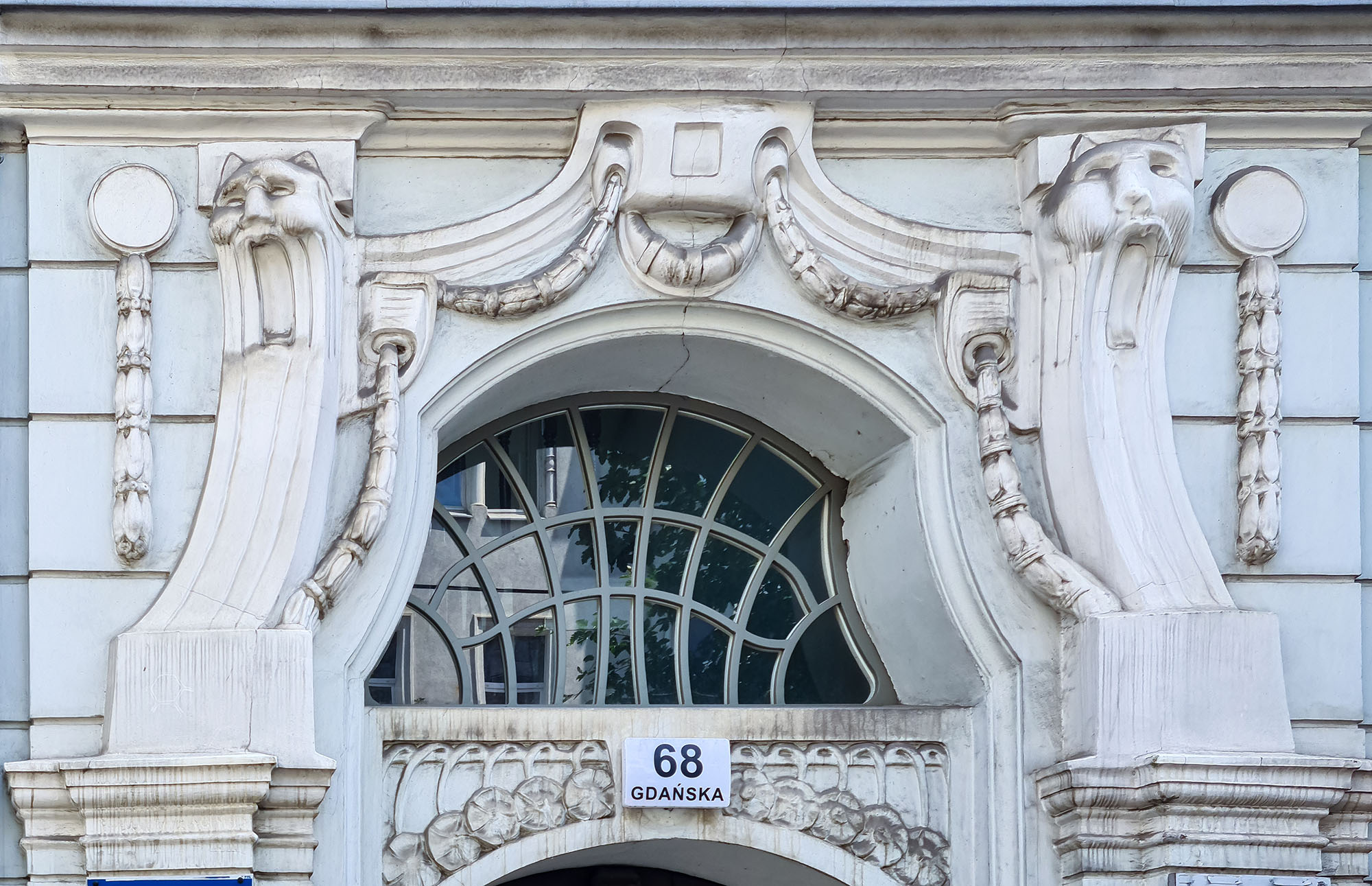
7. Tenement house at 10 Libelta Street, on the corner of Kołłątaja Street.
The building was erected in the years 1901-1902 by the master bricklayer and construction entrepreneur Georg Weiss, who was its first owner. It is not an example of the Art Nouveau style, but its facade is decorated with one of the largest and most spectacular Art Nouveau ornaments in the city. The entrance portal from the side of Libelta Street is entwined with plants and the entrance itself is guarded by two eagles. A little higher on the facade one can see sunflowers and a woman's face. The rays of the sun seem to be shooting up from behind the face. A modest Art Nouveau ornament can also be seen in the portal of the second entrance from the side of Kołłątaja Street. However, the entire structure of this mannerist tenement house deserves attention. The contrast between the red brick and the bright colour of the plastered parts of the facade makes a great impression.
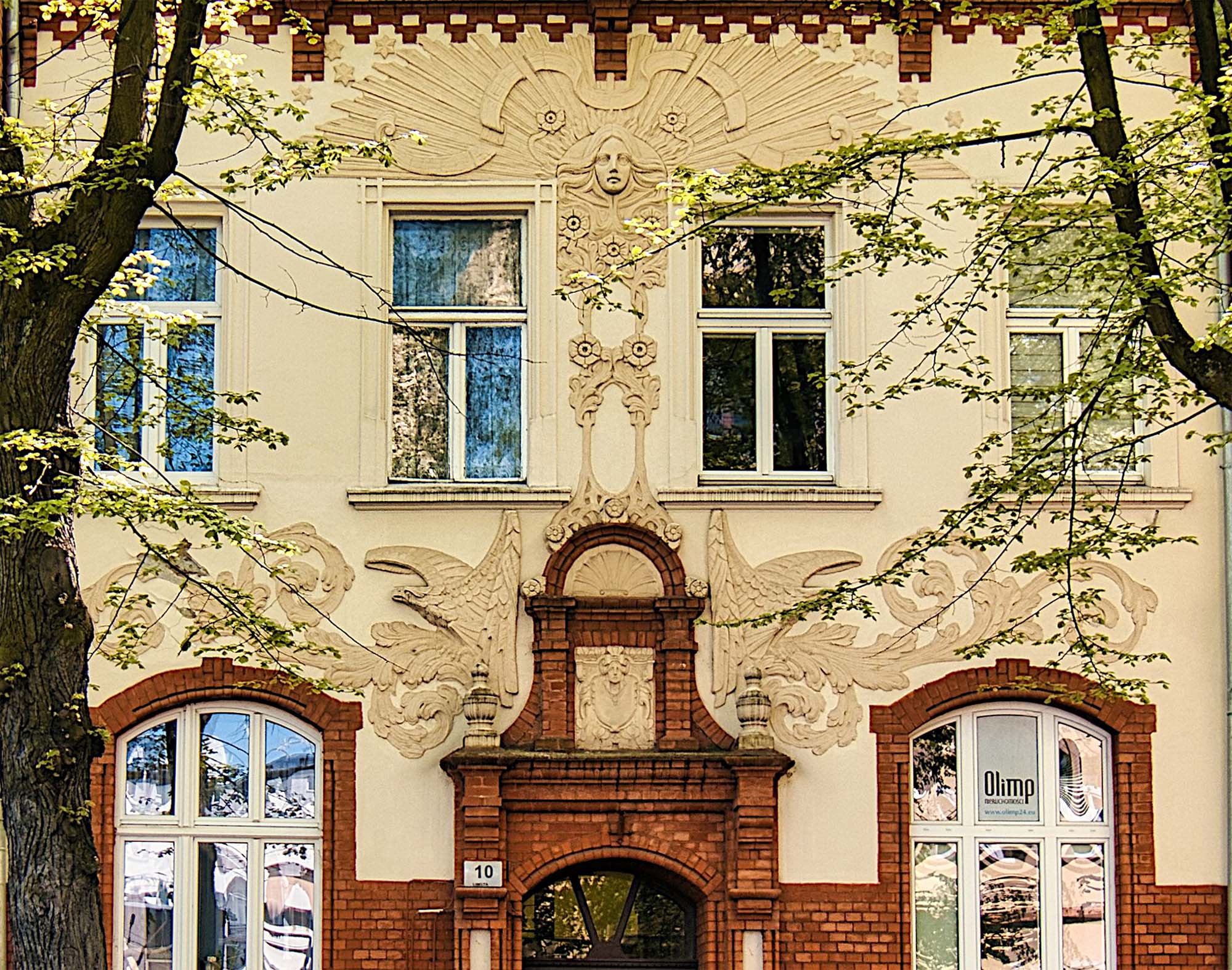
8. Villa at 62 Jagiellońska Street, on the corner of Krakowska Street.
The building was erected in 1907-1908 in what was then the suburbs of Bydgoszcz. It has an original, fragmented structure and beautiful decoration on its facade. The asymmetrically placed balcony and Art Nouveau ornaments in the form of faces is what attracts attention. However, the most characteristic element of the building is the lantern crowning the roof, as well as the decorative chimneys. The beautiful door with a preserved Art Nouveau handle is also noteworthy. The villa stylistically echoes the architecture typical of the Far East. The building is one of the most interesting and at the same time lesser-known examples of the Art Nouveau style in Bydgoszcz.

9. Tenement houses at 2 and 4 Focha Street, on the corner of Gdańska Street.
Both tenement houses were designed by the Bydgoszcz architect Karl Bergner. The building at number 4 was erected in 1901 for the merchant Reinhold Napiewocki. The one at number 2 was built in 1902 for the merchant Max Zweininger, a well-known hat manufacturer at the time. Both houses, stylistically similar, have a classic, symmetrical structure decorated with extremely rich Art Nouveau decorations. The corner building at number 2 is particularly impressive. Its facade is covered with floral ornaments and mysterious faces, but a sharp eye will also notice an owl, lark and crocodiles. In the corner one can see a sleeping woman and the head of Hermes. There is a lovely turret above Hermes, unfortunately now deprived of its original top. Art Nouveau ornaments once decorated the ground floor of the building, but they disappeared in 1940, when the arcade designed by Jan Kossowski was built.
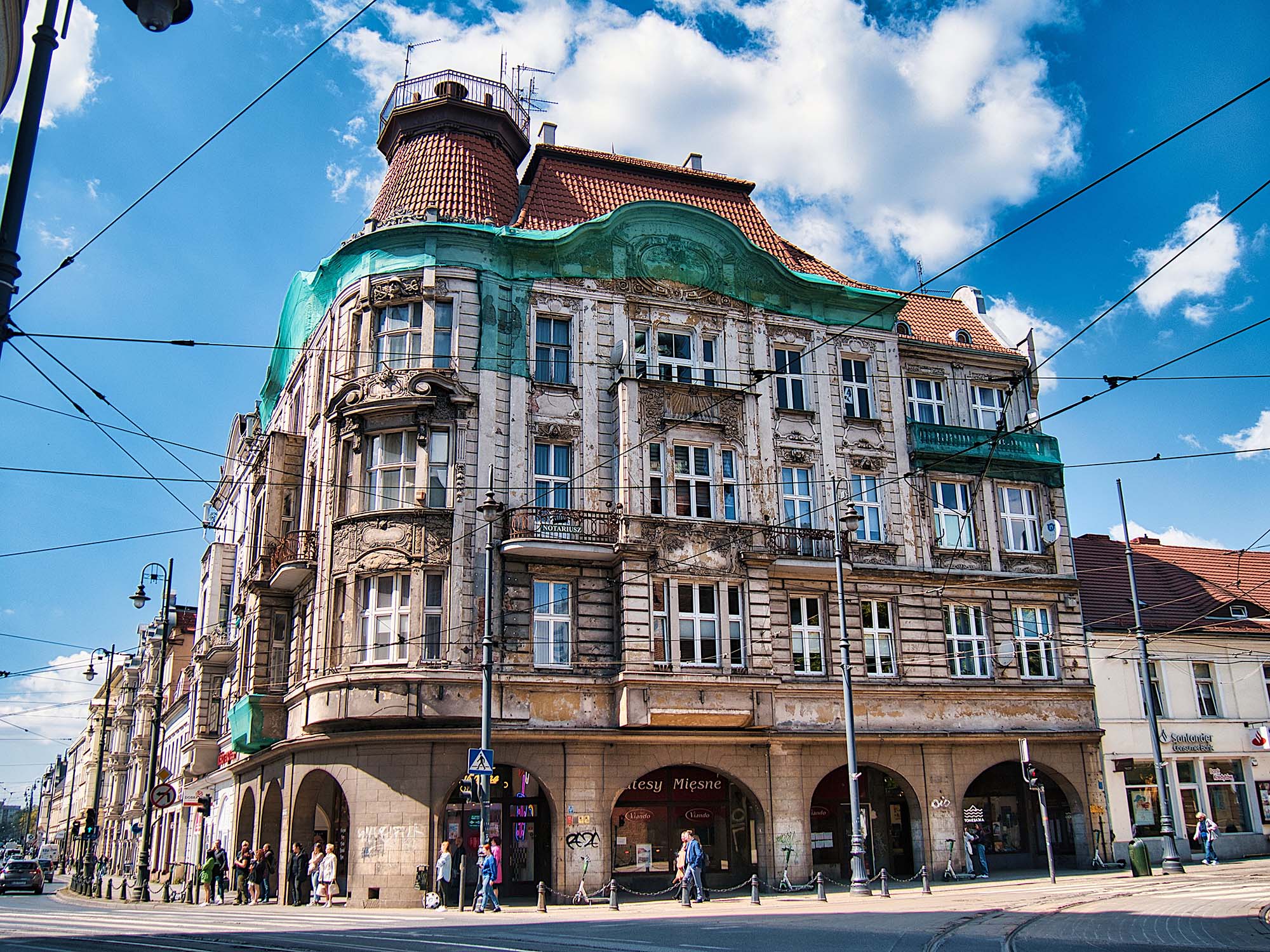
10. Tenement house at 1 Cieszkowskiego Street.
The building was erected in 1903-1904 according to the design of the Bydgoszcz architect Paul Böhm. The classical, symmetrical facade of the building was decorated with interesting Art Nouveau ornaments that stylistically refers to the Baroque. The building lost most of its decoration after 1945, luckily the renovation from 1994 restored its original splendour. The Art Nouveau window joinery in the windows of the first floor as well as the window above the entrance door, which provides light into the staircase, are especially noteworthy. Unfortunately, the original door has not survived, but the shape of the present door reflects the original one. The Art Nouveau character of the facade is emphasized by "the curves", the volutes surrounding the windows of the ground and first floors. The most interesting decoration of the building seems to be the somewhat geometric ornament in the style of the Berlin Art Nouveau, which can be found under the window at the top of the facade. At the bottom, there is a curving line typical of Art Nouveau. It separates the rusticated lowest part of the facade from the rest of the building. The same architect designed the neighbouring house at number 3. It is yet another interesting example of the Art Nouveau style in Bydgoszcz. The original window frames and the decoration of the ground floor of this building deserve particular attention.
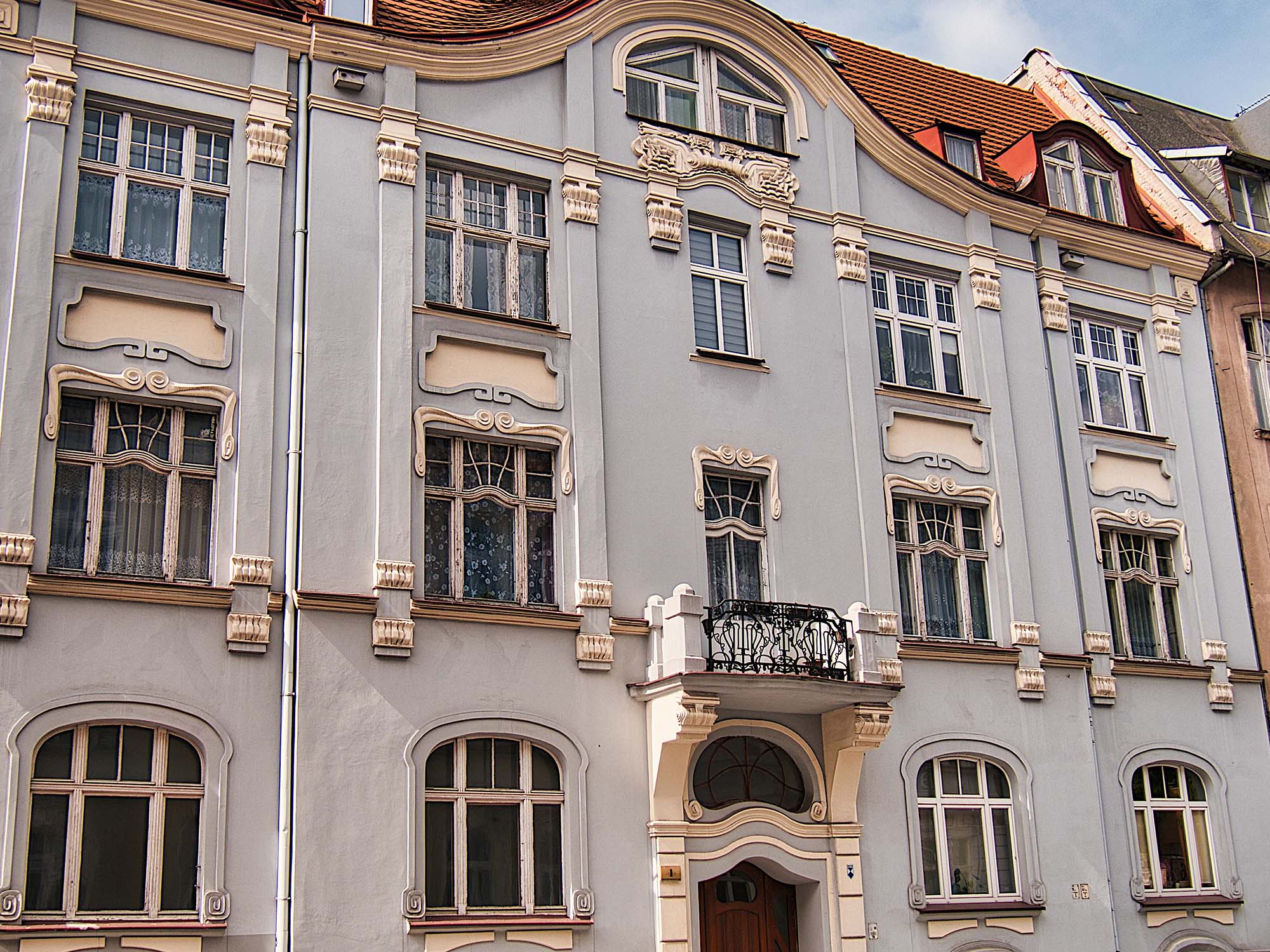
11. Tenement house at 12 Cieszkowskiego Street.
The building, erected in 1902-1903, was designed by the construction entrepreneur Victor Petrikowski and the Bydgoszcz architect Rudolf Kern. The tenement house is an example of the style called landhaus, however, its facade was covered with Art Nouveau ornamentation. Particularly noteworthy is the decoration of the entrance to the building. The oval window above the door seems to be entwined with vines and chestnut leaves. A mysterious female face emerging from under the plants looks at the guests approaching the original, rounded shape entrance. Art Nouveau decorations can also be found on the upper parts of the facade, between the windows of the first and the second floor. It is worth opening the well-preserved Art Nouveau entrance door to look at the ornaments decorating the staircase.
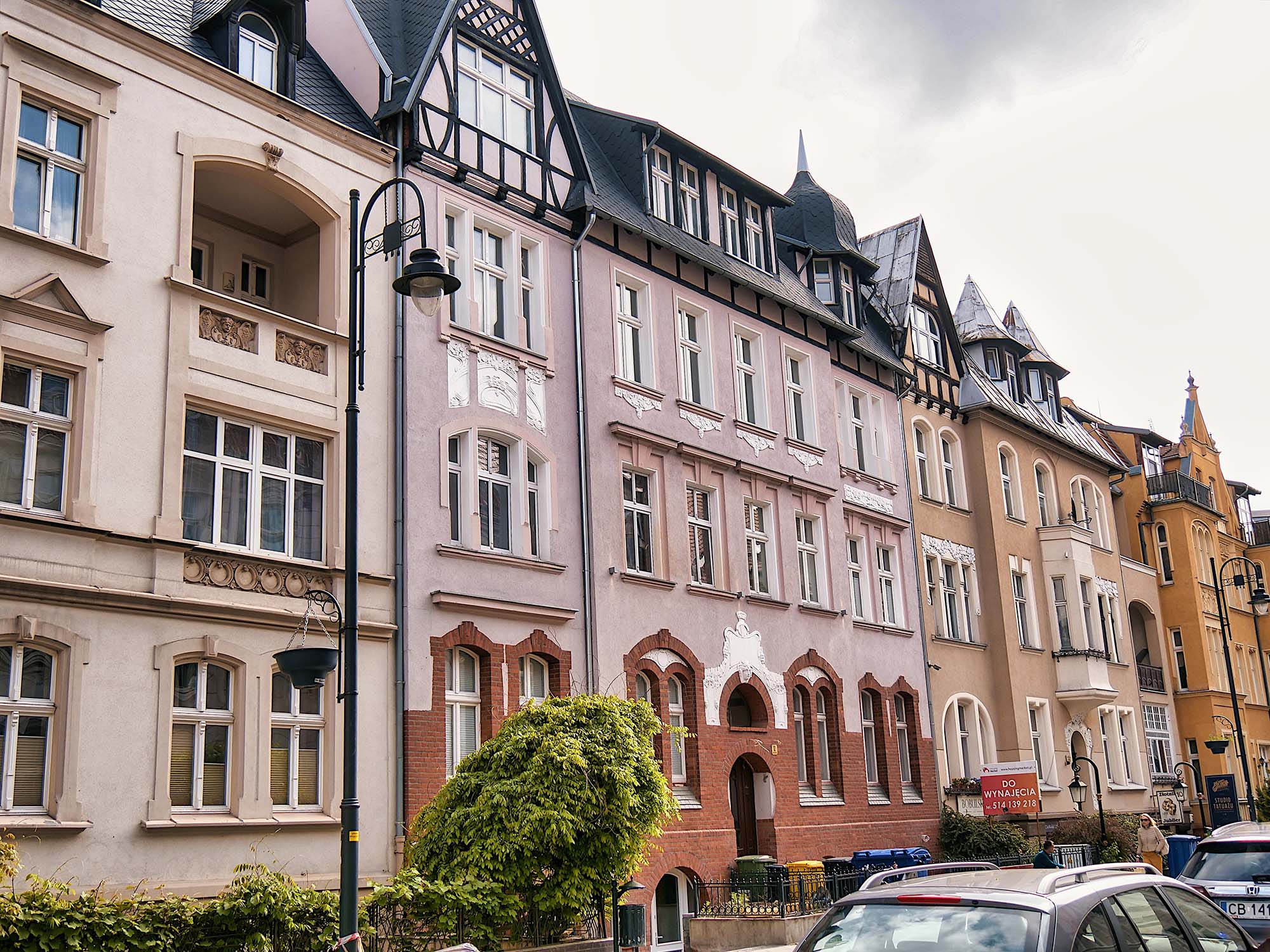
*Cieszkowskiego Street. It is commonly believed that Cieszkowskiego Street was built up with Art Nouveau tenement houses. This is only partially true. The buildings in this street present various architectural styles characteristic of the late 19th and early 20th centuries. Nevertheless, many of them were dressed in an Art Nouveau costume, receiving no more than Art Nouveau decorations. Beautiful, often truly original Art Nouveau ornaments can be found on the facades of the houses located at the following numbers: 9, 10, 13-15, 16, 18, 20 and 22.
12. Tenement house at 29 Śniadeckich Street.
The building from 1902 was designed by the Bydgoszcz architect Fritz Weidner for the photographer Karl Mauwe. The asymmetric facade is decorated with a bay window, balconies, windows of different shapes, as well as various tops (a half-timbered wall, turret and waving line). The large portal with Art Nouveau decorations and the door woodwork filled with flowers attract attention. The shape of the outermost windows on the ground floor and the only partially preserved Art Nouveau decorations of the bay window are also worth noting. In the part of the facade topped with a half-timbered gable, one can find a fragment of a decoration in the form of an idyllic scene depicting children in the garden.
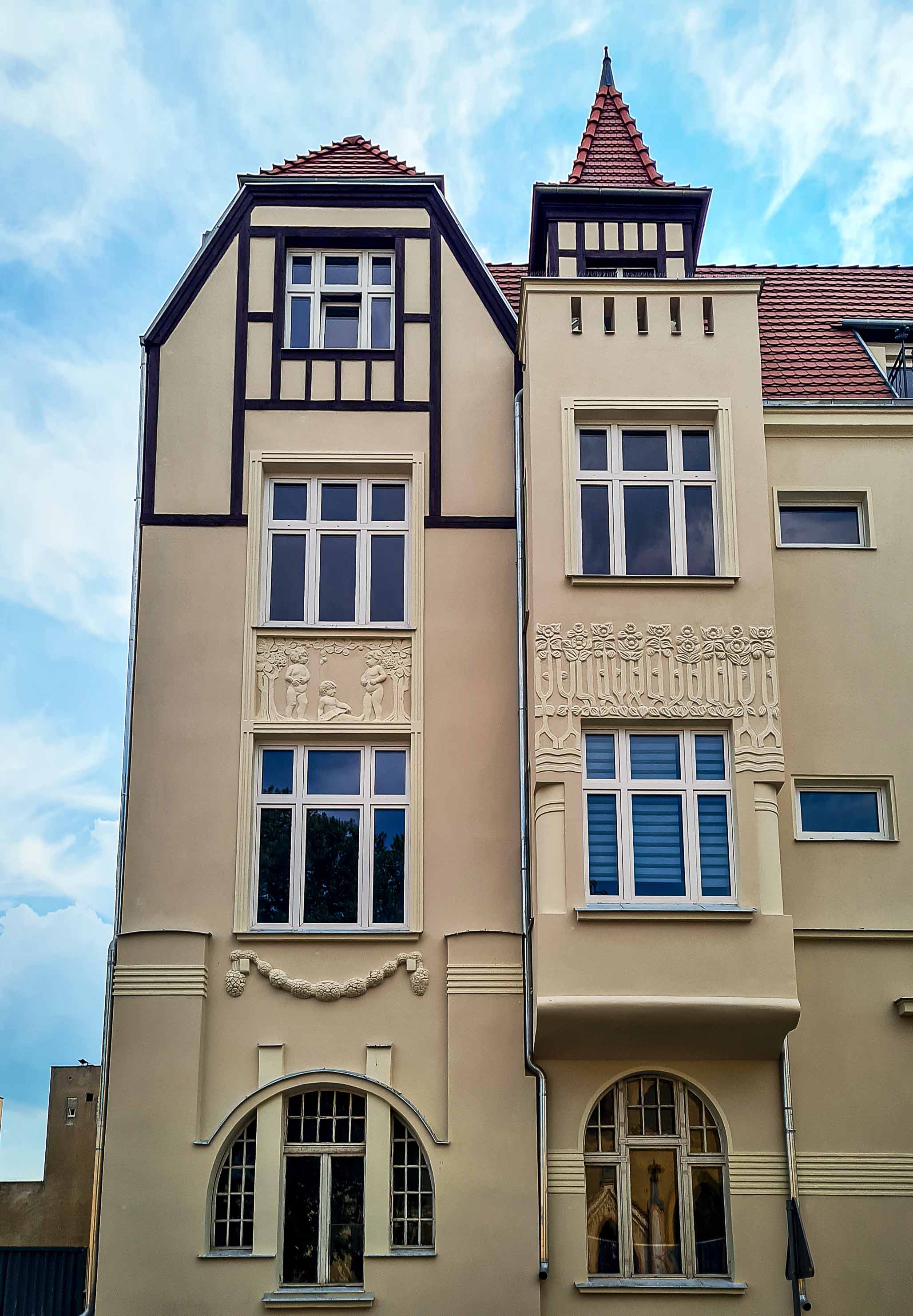
Of course, apart from the buildings described above, which are examples of the Art Nouveau style, one may find many structures in Bydgoszcz which are only covered with Art Nouveau decorations. They are scattered throughout the historic centre of the city. It is worth raising your head when passing at least some of them, for example walking by the buildings located at: 17 Długa Street, 23 Świętej Trójcy Street, 20 Garbary Street, 11 Śląska Street, 45 and 47 Dworcowa Street, 18 Warmińskiego Street, 3 Kwiatowa Street, 5 Gdańska Street, 3 and 15 Mickiewicza Avenue and 4 Zamoyskiego Street.









